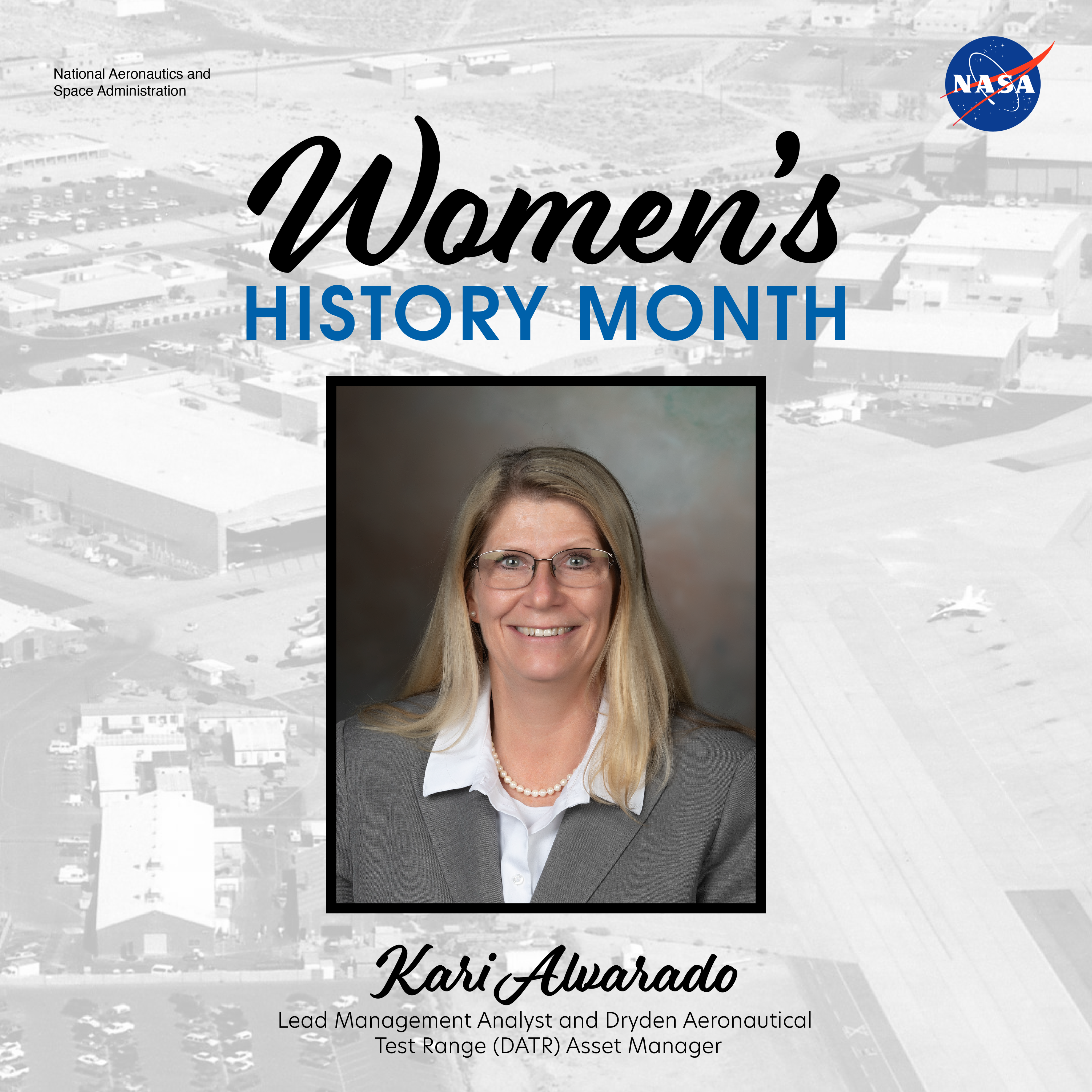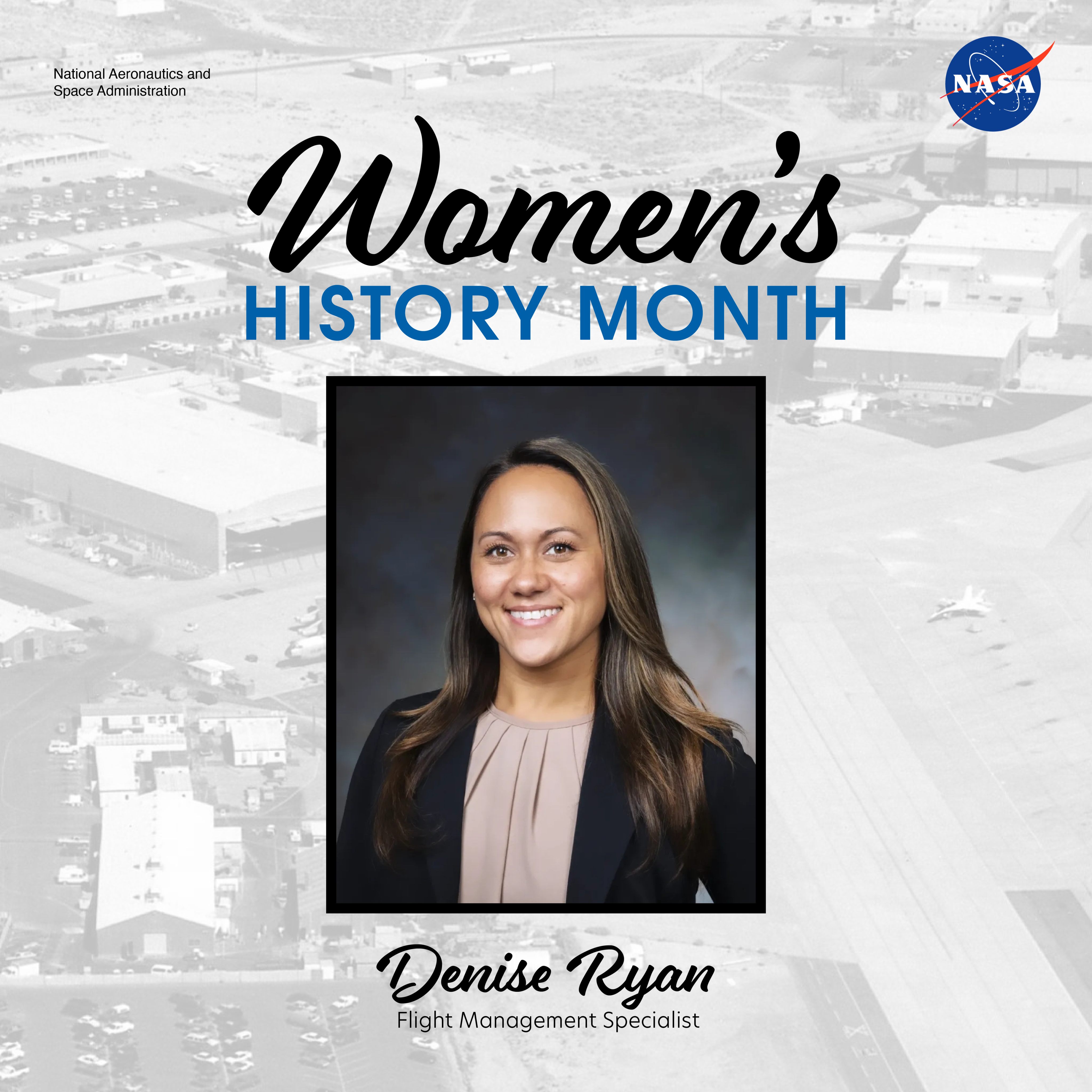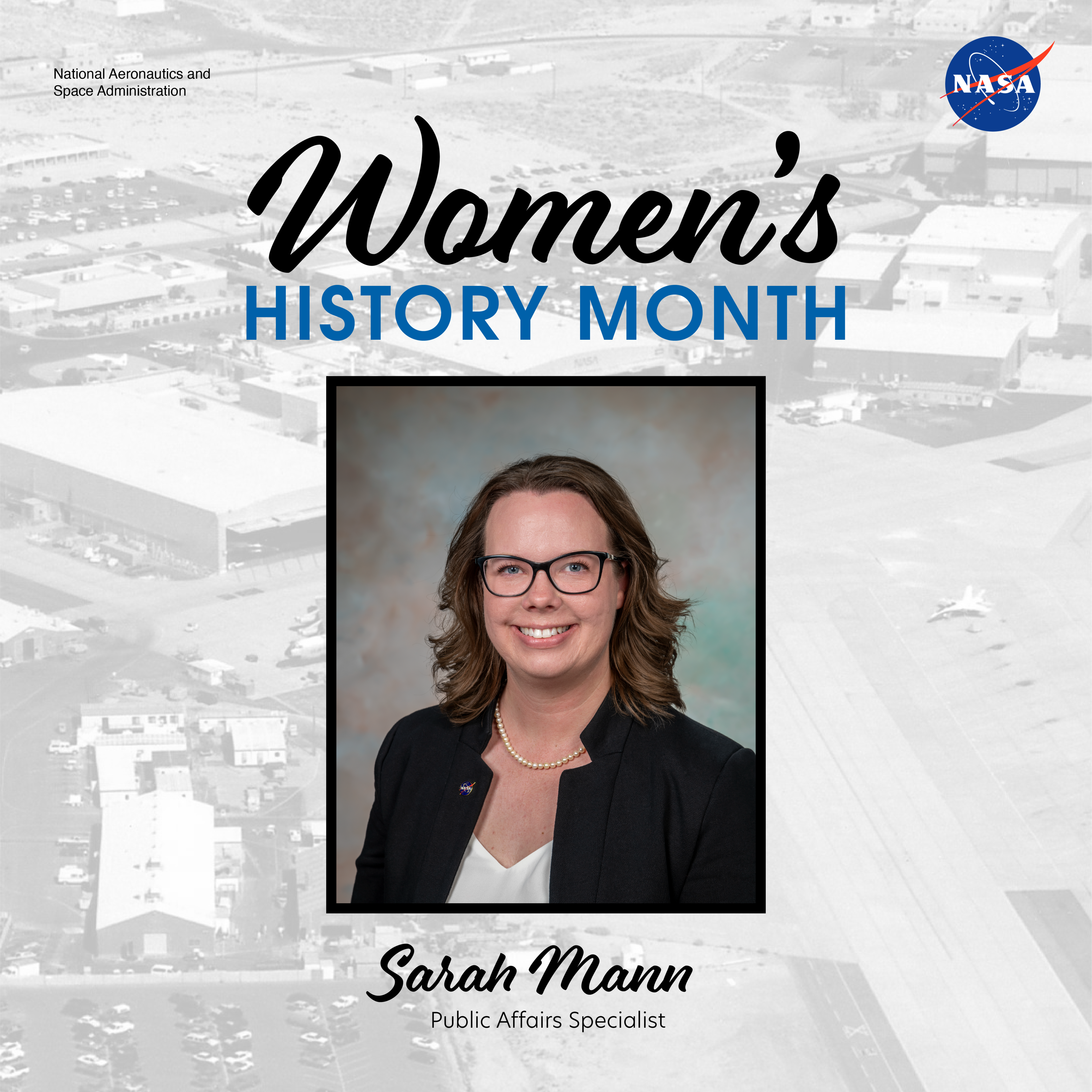7 min read
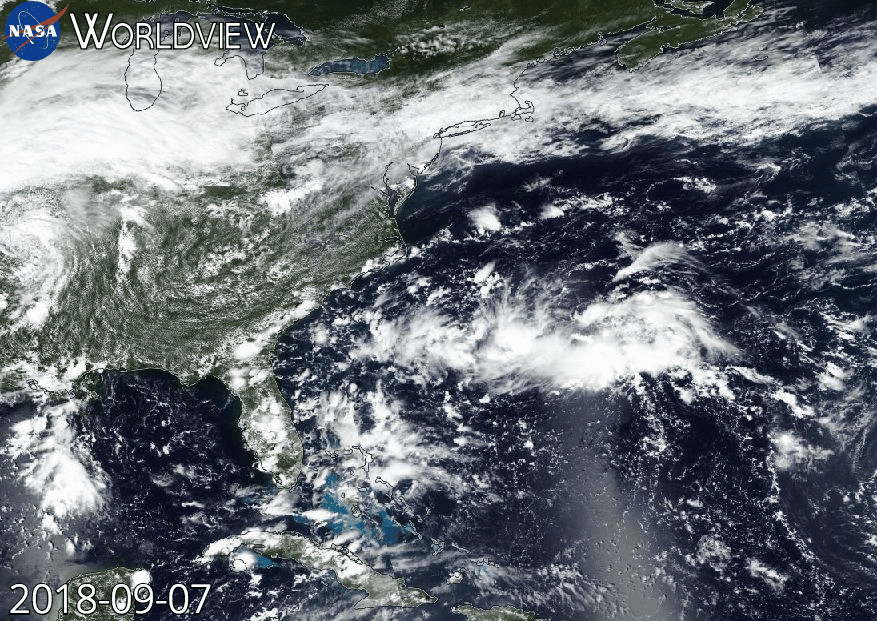
NASA has been tracking Florence since it began moving toward the East Coast of the United States and continued to monitor the storm as it inched across the Carolinas and farther inland. The space agency is sparing no available resource in working to keep disaster responders and agencies such as FEMA and the National Guard informed with the latest information to assist in decisions on everything from evacuations to supply routes and recovery estimates.
Here’s a snapshot of some of the ways NASA has been monitoring the storm and its repercussions:
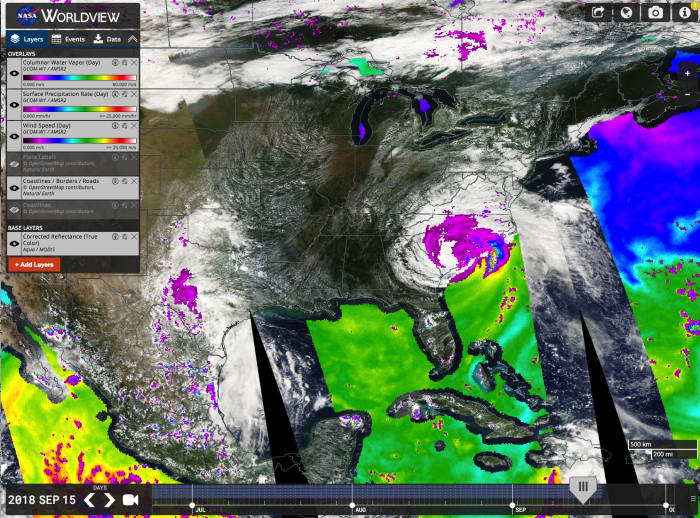
NASA’s Land, Atmosphere Near real-time Capability for EOS (Earth Observing System) (LANCE) provides data and imagery from Terra, Aqua, Aura, Suomi NPP, and GCOM-W1 satellites in less than three hours from satellite observation to meet the needs of the near real-time applications community. LANCE leverages existing satellite data processing systems in order to provide such products from select EOS instruments. These data meet the timely needs of applications such as numerical weather and climate prediction, forecasting and monitoring natural hazards, agriculture, air quality, and disaster relief.
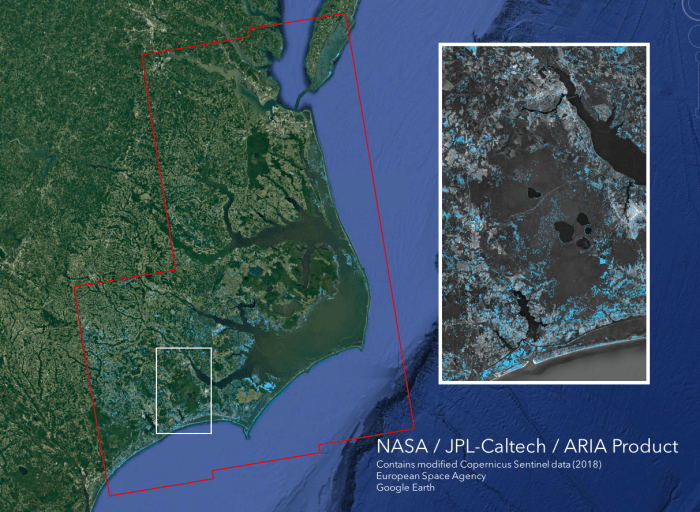
The Advanced Rapid Imaging and Analysis (ARIA) team at NASA’s Jet Propulsion Laboratory in Pasadena, California, created a flood extent map from Sentinel-1 synthetic aperture radar data acquired 12 hours after Hurricane Florence made landfall. The map, which was pushed to FEMA’s SFTP server (and is available to download), depicts areas of the Carolinas in light blue pixels that are likely flooded.
Media reports provided anecdotal preliminary validation. This map was cross-validated with ARIA’s earlier flood proxy map. This flood proxy map should be used as guidance to identify areas that are likely flooded, and may be less reliable over urban and vegetated areas.
To overcome that limitation, NASA’s Uninhabited Aerial Vehicle Synthetic Aperture Radar (UAVSAR) instrument aboard NASA’s C-20A aircraft is slated to fly over flooded areas to validate and improve these maps as well as provide near real-time imagery to assist local, state and federal partners.
For example, barrier islands and the immediate coastlines have borne the brunt of the storm surge and wind damage, resulting in the destruction of property along the coastline. UAVSAR imagery will help to clarify areas that have been impacted. Rapid acquisition of UAVSAR imagery revealing damaged homes and infrastructure provides higher spatial resolution details to complement “damage proxy maps” and other change detection approaches applied from routinely collected imagery or special collections from international partners.
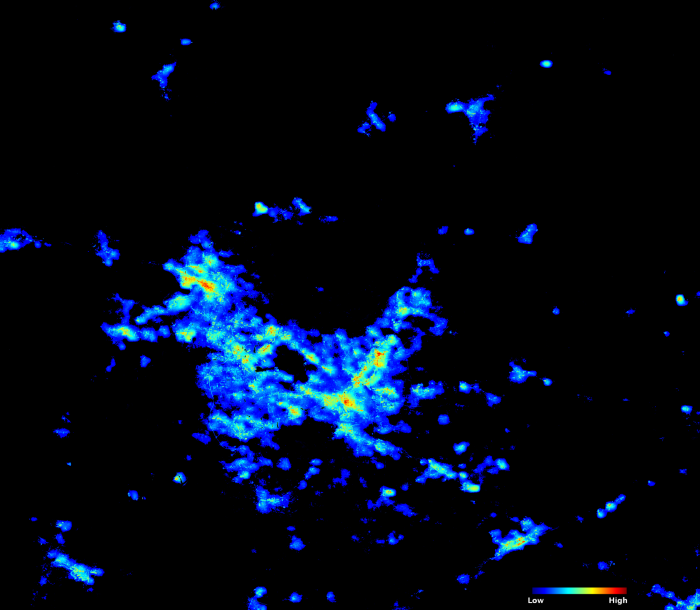

The Day/Night Band sensor of the Visible Infrared Imaging Radiometer Suite (VIIRS) aboard the Suomi-National Polar-orbiting Partnership and Joint Polar Satellite System satellite platforms (both NOAA partnerships) provide global daily measurements of nocturnal visible and near-infrared light. The VIIRS Black Marble product suite detects light in a range of wavelengths from green to near-infrared, including city lights and lights from other activity.
On September 14, 2018 North Carolina officials said the number of power outages due to Florence was more than half a million. The NASA Black Marble product suite has been used to assess disruptions in energy infrastructure and utility services following major disasters. The night-time imageries are useful for pre-event and post-event mapping and monitoring of power outages in cloud-free conditions.
NASA relies heavily on its fleet of Earth-orbiting satellites as well as satellites from partner institutions for data that feeds into critical weather and climate models. Below is a summary of a few of those assets:
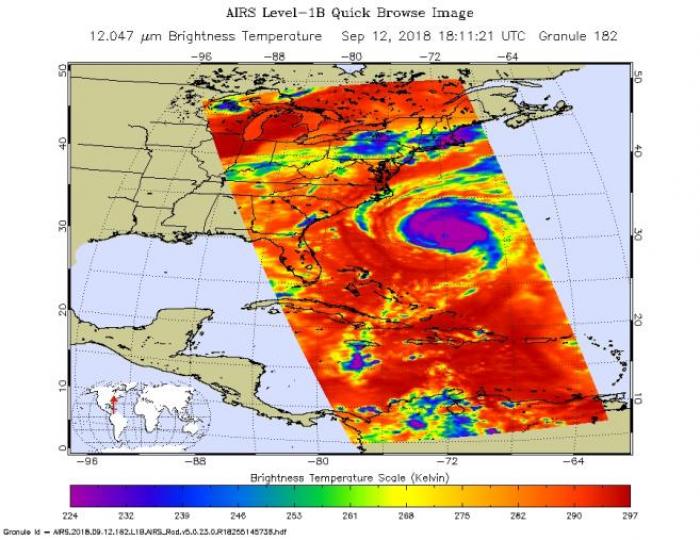
Aboard the Aqua satellite, the agency’s Atmospheric Infrared Sounder (AIRS), in conjunction with the Advanced Microwave Sounding Unit (AMSU), was able to capture three-dimensional images of the storm’s approach by sensing emitted microwave and infrared radiation. Warm colors in the infrared image (red, orange, yellow) show areas with little cloud cover, while cold colors (blue, purple) show areas covered by clouds at high, cold altitudes. The darker the color, the colder and higher the clouds and the stronger the thunderstorms. In partnership with the National Oceanic and Atmospheric Administration, these atmospheric observations are assimilated into operational prediction centers around the world to improve hurricane path prediction and other forecasts.
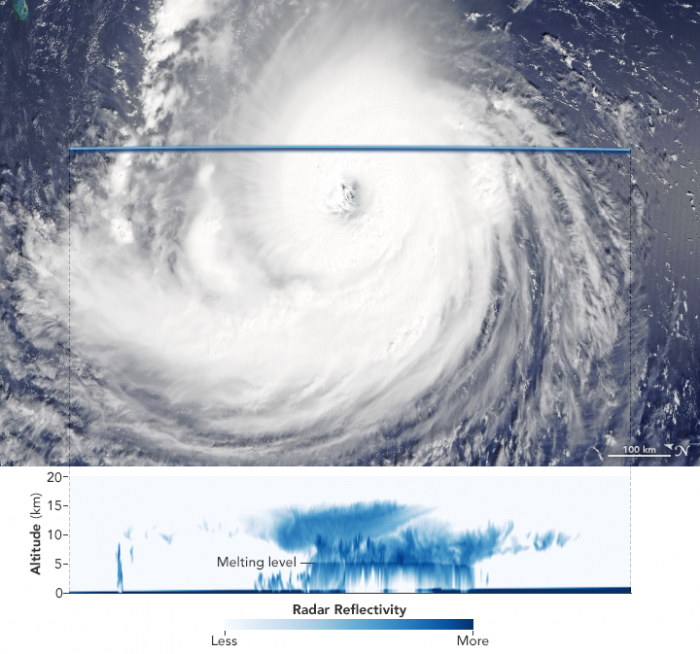
Another powerful instrument aboard the Aqua satellite (the same instrument is also aboard Aqua’s “twin” satellite, Terra) is the Moderate Resolution Imaging Spectroradiometer (MODIS). Aqua and Terra work in tandem to image the entire globe once every one to two days, which allows MODIS to capture a sweeping picture of any number of Earth dynamics, including storms, through its 36 spectral bands, or groups of wavelengths.
Here, a MODIS image of Florence is shown with a cross-section of the storm taken on the same day by NASA’s Cloudsat satellite. The CloudSat pass offers a unique view of Florence’s asymmetrical structure, the intense convection and rainfall churning inside the storm, and a complex vertical cloud structure that is not visible from above. The storm’s clouds reached an altitude of about 15 kilometers (9 miles) at their highest point—fairly high for a tropical cyclone. The darkest blues represent areas where clouds and raindrops reflected the strongest signal back to the satellite radar. These areas had the heaviest precipitation and the largest water droplets. The blue horizontal line across the data is the melting level; ice particles were present above it, raindrops below it.
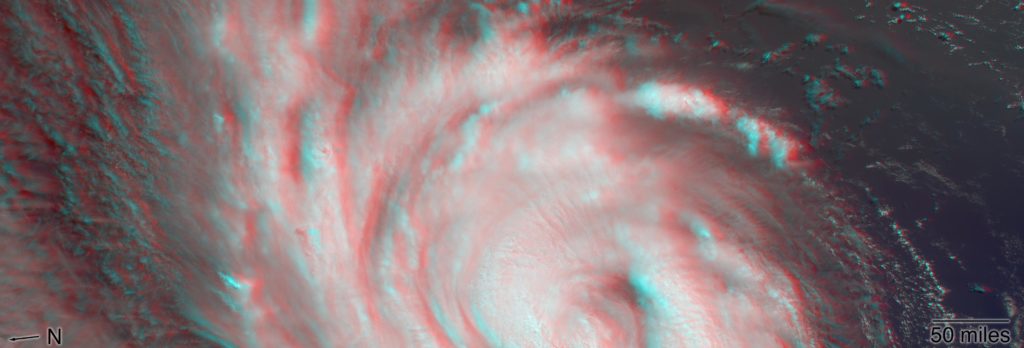
Global multi-angle imagery of the sunlit Earth is the specialty of the Multi-angle Imaging Spectroradiometer (MISR) aboard NASA’s Terra satellite. The instrument takes seven minutes to capture images from all nine of its cameras to observe the same location. MISR can reveal areas of high cloud cover associated with strong thunderstorms as well as spot powerful outer rain bands, which can sometimes spawn tornadoes.
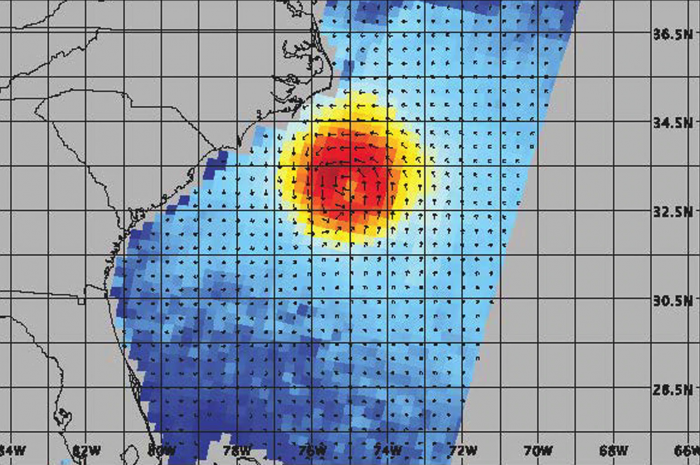
Managed by the Jet Propulsion Laboraty in Pasadena, California, and in coordination with NASA’s Goddard Space Flight Center in Greenbelt, Maryland, the polar-orbiting Soil Moisture Active Passive (SMAP) satellite plays a key role in forecasting flooding conditions. SMAP measures the amount of water in the top 5 centimeters (2 inches) of soil everywhere on Earth’s surface every 2 to 3 days. This permits changes of soil moisture around the world to be observed over time scales ranging from the life cycles of major storms to repeated measurements of changes over entire seasons. SMAP is also capable of estimating wind speeds over the ocean, as shown in the image above.
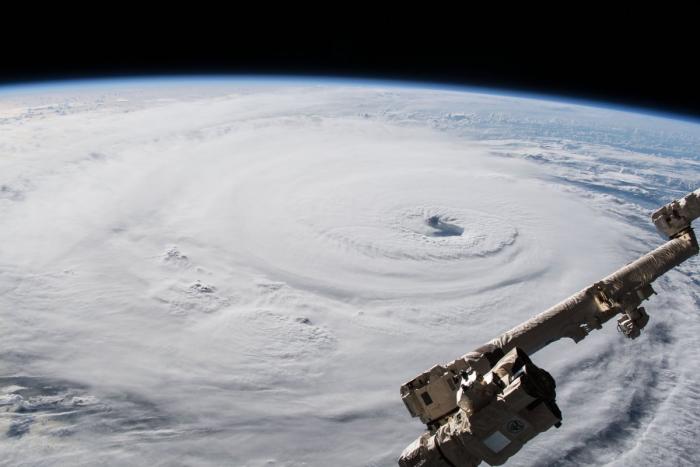
Astronauts aboard the International Space Station (ISS) have been snapping images of Florence with handheld digital cameras throughout the storm’s progression. Once the storm has passed and cloud cover lessens, requests to document flooding and changes to the land surface will be sent to the crew as part of ongoing NASA ISS response to the International Disaster Charter activation for Hurricane Florence. Imagery of this type is then georeferenced by the Earth Science and Remote Sensing Unit at NASA’s Johnson Space Center in Houston.
Also aboard the ISS is the Lightning Imaging Sensor (LIS), which detects the distribution and variability of total lightning day and night in order to improve severe weather forecasting and further scientific study on the relationship between lightning, clouds, and precipitation. Over a 12-hour period, LIS observed an average of more than 5 lightning flashes every 90 seconds in the vicinity of Hurricane Florence on September 14, 2018.
This piece was originally published on NASA's Disaster Response blog.

